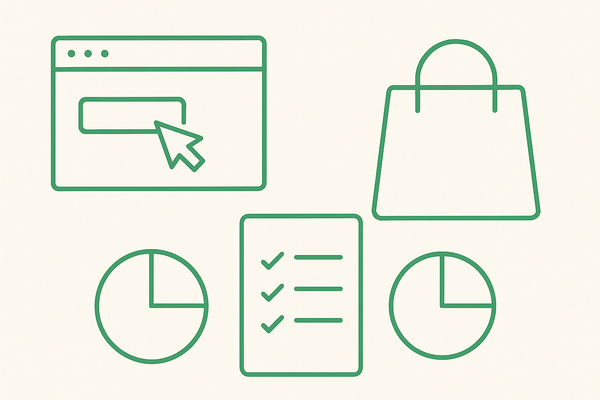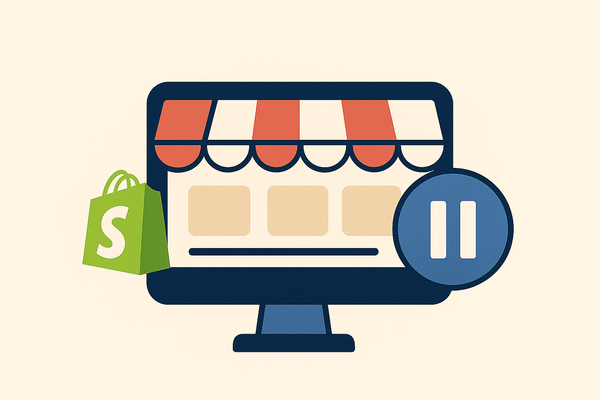Shopify has unveiled its Summer 2025 Editions, and it’s one of the most comprehensive updates we’ve seen to date. From new theme designs to artificial intelligence enhancements. Shopify continues to evolve as a powerful, all-in-one platform for ecommerce businesses. Firming itself as the number one platform. Below, we take a look at what’s new across each category and what it means for merchants today.
Themes
Shopify has made a big move with the introduction of 10 new free themes, nearly doubling its free theme offering from 13 to 23. This is great news for store owners looking to refresh their design without investing in a premium theme. These new themes aren’t just plentiful—they're also more powerful and customisable than ever before.
Notably, Shopify has added features like mega menus to some of the new themes, which is ideal for stores with a wide range of products or complex collections. In terms of layout flexibility, you can now add blocks directly into existing sections, giving you the freedom to build out custom page structures with ease. Product cards are also much more adaptable, allowing you to drag and drop elements to suit your brand’s presentation.
AI has been seamlessly integrated into the theme-building process. You can now describe a feature or layout you want, and the AI will generate a custom theme block for you. Shopify even claims you can design an entire theme in seconds by simply describing your brand—but during our testing, we couldn’t find where to access this specific functionality.
In addition, the theme editor itself has seen a series of improvements, making it more intuitive and easier to use. Whether you’re building from scratch or making updates to an existing theme, the process is now quicker and more user-friendly.
Free themes have definitely become more viable for serious online retailers. However, if your store has a large inventory or you require a higher level of design control, it might still be worth investing in a premium theme. We explore this comparison in more depth in our blog post: Should You Use a Free or Premium Shopify Theme?
Sidekick
Sidekick has come a long way since its launch in December 2024, and the latest update adds even more functionality to Shopify’s AI assistant. What started as a smart helper for basic tasks has quickly grown into a genuinely useful tool for merchants.
With Sidekick, you can now perform a wider variety of tasks, such as setting up collection pages or getting strategic advice on product positioning and campaign timing. It feels like having a Shopify expert available 24/7—especially useful if you're running your store solo or with a small team.
The tool is now integrated into the Shopify mobile app, meaning it’s always with you, whether you’re in the office or on the go. Shopify has also teased a new voice chat and screen sharing feature, allowing Sidekick to guide you through tasks step-by-step in real time. While this feature wasn’t available at the time of writing, it promises to be a game-changer when fully rolled out.
We’re impressed by how much Sidekick can do in such a short time since launch, and it’s clear that Shopify sees this as a key part of its long-term strategy.
Retail
Shopify’s POS system has received a significant upgrade, with improvements in speed, intelligence, and customisation. The new version of the POS app is faster to load, easier to use, and better integrates with your brand. One standout feature is the ability to customise your POS lock screen, adding a professional and cohesive feel for your staff and in-store experience.
Navigation within the app has been streamlined, making it easier to find what you need without delays. For businesses operating both online and offline, the POS system provides a powerful way to unify marketing efforts—for example, sending automated thank-you emails after in-store purchases.
However, one lingering issue is that Shopify POS still isn’t available for desktop, which can be a limitation for some businesses. Not all shops want to run their point-of-sale operations from an iPad, so we hope Shopify addresses this in a future release.
Checkout
The checkout process has seen some smart upgrades with a focus on security and flexibility. Shopify now uses AI to help identify potentially fraudulent transactions, giving merchants an added layer of protection. It’s also important to note that Shopify checkout is now fully compliant with PCI DSS Version 4—an essential requirement that came into force on 1 April 2025.
Shopify has also expanded its support for Apple Pay, offering customers even more ways to pay quickly and securely. These changes not only improve the user experience but also help build trust at the most critical stage of the buying journey.
Global
Expanding your store globally has just become easier with several key updates under the Global category. Shopify Payments is now available in 16 more countries and supports payouts in eight currencies across Europe and Australia. This is a massive benefit for businesses aiming to grow their international footprint.
Shopify now allows duties and taxes to be calculated and collected at checkout, which improves pricing transparency for customers and reduces post-sale surprises. You can also create sub-markets within existing regions, which helps you tailor pricing, shipping, and marketing based on more specific customer segments.
Customer accounts are now better integrated with Shopify Markets, allowing a more seamless experience for returning international customers. These updates make Shopify a stronger platform for cross-border commerce than ever before.
Marketing
Shopify’s marketing toolkit has received some practical enhancements. Merchants can now create discount codes that apply across multiple parts of the purchase process, including product prices and shipping. This adds more flexibility for running complex promotions.
A brand-new Knowledge Base app has also been introduced. This allows store owners to input their own data and resources, which AI-powered support agents can then access to answer customer queries more accurately. We’re excited to see how this develops and plan to test it soon.
In addition, Shopify has released a new mobile app for Collabs, for content creator. This makes it easier for influencers and partners to manage collaborations, even when on the go.
Shop App
The Shop App continues to evolve as a discovery and loyalty tool. Merchants can now mirror their product detail pages directly in the app, complete with swatches and variant options. This ensures a consistent shopping experience across platforms.
Shoppers can create and share curated collections with friends and family, adding a social layer to the app. And with the new integration of store credit and loyalty points, customers now have even more incentive to shop and return.
If you haven’t optimised your store for the Shop App yet, now is a great time to explore the potential.
B2B
For Shopify Plus users, the B2B experience has been taken up a notch. You can now create multiple B2B markets, each with its own unique product catalogue, storefront, and currency. This allows merchants to tailor their wholesale offerings by region or customer type.
A particularly useful new feature is the ability to preview your storefront as a B2B buyer. This makes it easier to check that pricing, messaging and layout all appear as expected.
These enhancements make Shopify a more compelling choice for B2B commerce, especially for wholesalers looking for a scalable, modern platform.
Shipping
Shopify has made several improvements to shipping workflows that will be particularly useful for busy fulfilment teams.
Merchants can now print pick lists by product or by order, complete with SKUs and quantities. This simple change can significantly speed up packing and reduce errors. You can also manage all your different delivery methods in a unified view, making it easier to implement changes on the fly.
Flat-rate shipping has been improved to support items shipped from multiple locations. And with more logistics partners now integrated into the platform, you have even more flexibility when choosing how and where to ship your products.
Operations
A handful of small but impactful changes have been introduced under the operations umbrella. You can now refund customers as store credit, regardless of how they originally paid. This is great news for small retailers, as it keeps revenue within the business and encourages repeat visits.
Shopify has also made back-end improvements to the admin experience, including faster load times (up to 30% quicker) and a cleaner, more streamlined interface. New analytics features give you better insight into performance, helping you make more informed decisions.
Final Thoughts
The Shopify Editions Summer 25 update is packed with practical improvements across the board. Whether you’re looking to expand internationally, streamline operations, or improve customer experience, there’s something in this release for everyone.
At Digi Creative, we help businesses build, optimise, and grow on Shopify. If you’d like support implementing any of the new features from this update—or are starting your Shopify journey from scratch—get in touch. We’d love to help bring your ecommerce vision to life.




Leave a comment